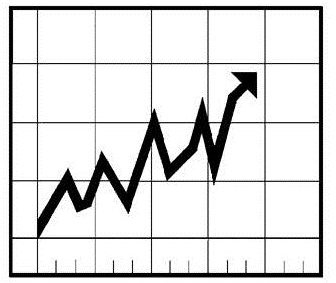Common Sales Forecast Formulas: How to Predict Annual Sales
The Value of Sales Forecasts
For every business, robust sales are the key to prosperity and future growth. A sales forecast is a vital tool that a business owner can use to develop a budget and plan future expenditures.
The sales forecast process often serves to illuminate strengths and potential weaknesses in the comprehensive business sales plan. By examining pertinent historical data, a sales forecast attempts to project future sales activity. Extending past sales trend lines as a method of predicting future sales is not forecasting. Extrapolations provide raw information, but a true sales forecast requires an element of judgment as well.
Forecast Components
There are a number of key components that should be involved in filtering raw sales data for inclusion in an accurate sales forecast. This takes the analysis past empirical data and adds additional elements of consideration and forethought to the process. Among the
key components are the following:
-
Defining the Customer Base: Essentially identifying the customers that will be included in the forecast
-
Geographical Area: This includes the current service area as well as any planned expansion activities.
-
Market Conditions: A key determinant of future sales success is the accurate appraisal and recognition of future market conditions.
-
Time Period: How far in advance will the forecast anticipate?
-
Positioning: The relative competitive position of a business within its industry, its market share, customer loyalty and prospects for growth.
-
Business Proficiency: Accurately assessing the ability of the business to adapt to changing market conditions and judging its core competency in sales marketing and management.
Sales Forecast Formulas
There are a number of sales forecast formulas which can provide insight into future sales opportunities and expectations. With the benefit of a defined history and sufficient human analysis, sales forecast methodologies can prove extremely useful in advancing sales goals and quotas.
-
Top Down Forecasting: Top Down forecasting creates sales potential estimates and allows for development of sales forecasts based on this information. In using a top down forecast it is very important to ascertain the reliability of underlying assumptions used to construct the model. A top down approach bases a company’s forecast on expectations rather than empirical data.
-
Bottom Up Forecasting: This formula includes dividing the market into sectors and determining the demand for each product category. The methodology is data intensive and often includes detailed surveys to gauge customer interest and intent to buy. The accuracy of the Bottom Up forecast is highly dependant on the reliability of customer input.
-
Qualitative Forecasting: The Qualitative method a non-statistical process of predicting future sales activity based on input from a variety of individuals involved in the activities of the business. This would include unit managers, sales people, sales managers, executives and outside consultants. The resulting information is molded into a comprehensive composite view of the business moving forward. The Qualitative method is preferred when relevant data is unavailable or suspect, and when there is an anticipation of a change in customer buying habits.
-
Regression Forecasting: Regression forecasting is a process that links future sales expectations to either specific or multiple variables. The value of independent variables is analyzed to identify causal links between the variables and sales. For instance, a link could be established between the number of days a sales manager traveled with the sales force and the resulting cumulative sales. This kind of correlation is considered a Linear Regression model. Adding additional variables to the forecast is considered a Multiple Regression model.
-
Trend Projection: Trend Projection or Moving Average, is a forecasting method that takes the mean average of past sales and predicts future performance. As opposed to a standard linear approach, a moving average smoothes out performance trend and projection extrapolations by minimizing the impact of singular events.
Constructing a Sales Forecast
In its simplest form, sales forecast formulas can be constructed in Excel based on product, customers or both. Using historical data for units, cost and sales in separate columns, and then applying an expected growth factor based on one of the analysis formulas can provide a reasonably accurate forward looking blueprint.
